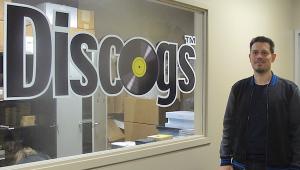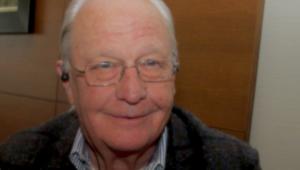I first saw Deep Purple in 1972. Opening acts were Buddy Miles and Uriah Heep. Ritchie Blackmore burned it up on guitar, but my strongest memory is of Ian Gillian's screaming. When he cut loose it was like an ice pick going right into my ears. Might have lost some of my high midrange hearing that night. I was probably too close to the PA speakers...
Deep Purple’s Roger Glover on the Teamwork Behind Capturing the Band’s Vintage Sound on Their New 180g 45rpm 2LP Set Dubbed = 1, Plus Taking Stock of 50-Plus Years of Machine Head
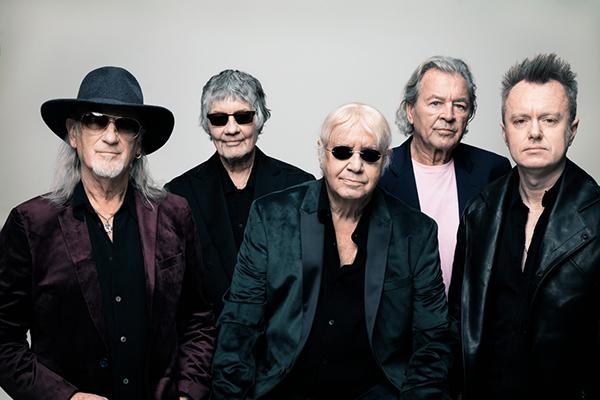
Bassist Roger Glover is the secret sauce of Deep Purple. His pub-rock roots fuel the sonic elixir that gives Purple’s musical bouillabaisse blend of rock, classical, and progressive the extra oomph it needs — and it’s something that’s well in evidence on Deep Purple’s latest, and 23rd, studio LP, the 180g 45rpm 2LP set named/numeraled = 1, which was released by earMUSIC/Edel on July 19, 2024.
It's Purple’s fifth collaboration with noted producer Bob Ezrin (Pink Floyd, Alice Cooper, Peter Gabriel) over the past 11 years, and their collective in-studio shorthand has found Purple in the midst of their 21st century prime. “It may sound like the ’70s, a comment I’ve heard a few times, but it’s not a conscious thing,” Glover says of the new 2LP set. “It’s just the change of guitarists, like the change in the recipe.” What Glover is referring to here is the DP LP debut of guitarist Simon McBride, who took over for Steve Morse following his departure from the band in 2022 after 18 years of truly creative, inventive fretboard service. Both McBride and Morse have a high degree of respect for the classic Purple sound, adding in their own axe twists and turns when warranted. Listen how Morse expands and contracts on “Sometimes I Feel Like Screaming” (Side Two, Track 1 on February 1996’s Purpendicular, originally a CD on CMC International and eventually a 2011 2LP set via RCA/Music on Vinyl), while McBride muscles up in various movements on the new = 1 track, “Portal Door” (Side A, Track 4).
Continues Glover, “The main ingredient is the guitar — it’s a rock band! — so that couldn’t be helped, and Simon is that kind of player. He could be my son! (laughs) [McBride as born in 1979, while Glover was born in 1945.] You can’t help but notice the fact that he’s full of energy, and he reminds me of how we were back then. That energy has infected the band.” More choice = 1 cuts include the gnarly fusion/metal aim of “Sharp Shooter” (Side A, Track 3), the all-seeing progressive eye of “Pictures of You” (Side B, Track 3), and the album-closing thrust of “Bleeding Obvious” (Side D, Track 2). All in all, I give = 1 an 8 for Music, and an 8 for Sound.
The stats are these. The source material was digital file masters — but spreading all 13 songs of = 1 over four sides at 45rpm apace offsets any digital bias you may have. The lacquers were cut at and the vinyl was pressed at Optimal Media GmbH (Glienholzweg 7, 17207 Röbel, to be more precise), which also happens to be part of Edel Music & Entertainment GmbH, earMUSIC’s parent company. The SRP for the = 1 black vinyl 2LP set is $35.99, and you can order it at Music Direct here (as well as via the MD graphic at the end of this story). A limited-edition purple vinyl version of = 1 can be found at the official earMUSIC site here for $40.
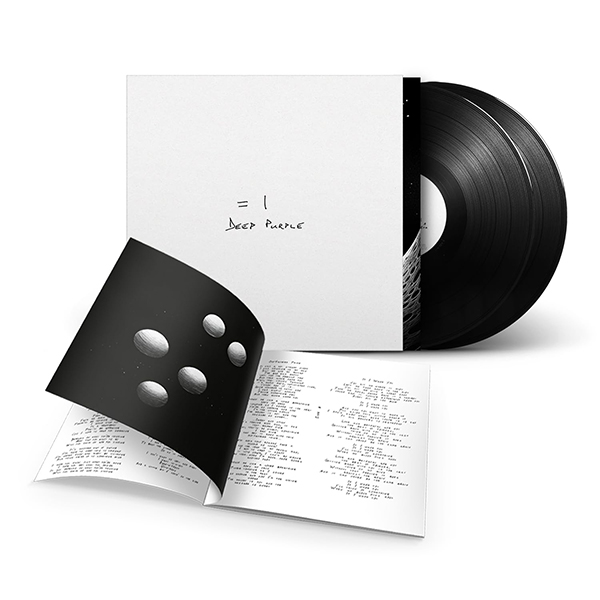
Though Deep Purple have been at it for going on (yes) seven decades and counting, they’re far from being done. “We are free to do what we want — and that freedom is great. No one actually tells us what to do,” Glover notes. “And we’re a fun band. Yeah, we’re not a dang serious band. There’s always been a great deal of wit and wisdom and poetic license in the lyrics that we use. [DP lead vocalist] Ian Gillan and I do a lot of crosswords, so we love playing with words and meanings, and double meanings and triple meanings, so it’s always fun.”
Me, I also happen to be partial to Glover’s November 1974 solo concept rock-opera LP on Purple Records, The Butterfly Ball and the Grasshopper’s Feast, and would readily welcome a Glover-remastered 50th anniversary 2LP set of it — not to mention a new remaster of the animated music video for “Love Is Air,” one of the tracks sung by one of Glover’s eventual bandmates in Rainbow, their co-founding lead vocalist Ronnie James Dio. “I always imagined it being performed in a theater,” Glover admits, “but I don’t see anything happening with it anytime soon. You know, there was some talk from Universal about doing a Roger Glover box set of all my solo stuff. I don’t know when or if that’s gonna happen — that’s entirely up to them — but I think it’d be a nice thing to do.” (Hear, hear.)
Glover is fully aware how lucky he is to do what he does for a living. “Never a moment goes past without me realizing, ‘Wow. What a life I’ve had,’” he demurs. “There’s been peaks and valleys, and somehow, I’ve managed to stay here. To me, it’s a miracle of some kind.” Thankfully, our ears continue to be the beneficiaries of Glover and Purple’s respective aural largesse.
On a recent Zoom call to Switzerland, Glover, 78, and I discussed his instinctual connection with drummer Ian Paice, which version of the band’s classic 1972 LP Machine Head is his favorite, and what vintage Deep Purple albums he’d like to remix himself. If you ever return / We’ll see if you learned / That it all adds up to one. . .
Mike Mettler: I have to take issue with the song that says you’re all just a bunch of lazy sods [i.e., “Lazy Sod,” Side C, Track 1], because it seems like it’s the exact opposite to me.
Roger Glover: (laughs) Yes, well, we are at that, really. (continues chuckling)
Mettler: Agree to disagree, then. (more laughter) Anyway, I’m glad you’ve decided to do four sides of vinyl for = 1. You could have just done 50 minutes on one LP, but somewhere along the way you must have felt like, “Hey, this music needs to breathe.” Tell me about that.
Glover: Well, you could only get about 20 minutes on each side in the old days, which is why our ’70s albums [usually] only had seven songs. And actually, it wasn’t our decision to do four sides — that’s the record company’s decision, I have to say. They’re very good, and they think of things like that.
Mettler: Yeah. Well, I’m glad you guys have fully embraced vinyl in the earMUSIC era. I also think it’s fair to say that you are the glue of the rhythm section, and the connection you and [drummer] Ian Paice have together comes through here on = 1. I think it was something you told me the last time we spoke in 2020, where [original DP keyboardist] Jon Lord told you back in1969, “If you stay out of the way of Ian’s fills, you’ll be okay.” Is that still true?
Glover: Well, it was true in those days, yeah. (chuckles) It was true. We couldn’t hold Paicey down. Every song was like a drum solo, which was great — although, at the time, we thought it was too much. But, looking back on it now, it was brilliant, you know?
Over the last many decades now, he’s settled into the groove and the rhythm, rather than being flash. Being flash is beneath him. He is what he is, and he’s quite unique. And I can tell if he’s the one who’s playing. If you play me a blind track and say, “Is this Paicey?” I’ll go, “No, that’s not Paicey,” or “That is Paicey.” That’s not easy to find in a drummer.
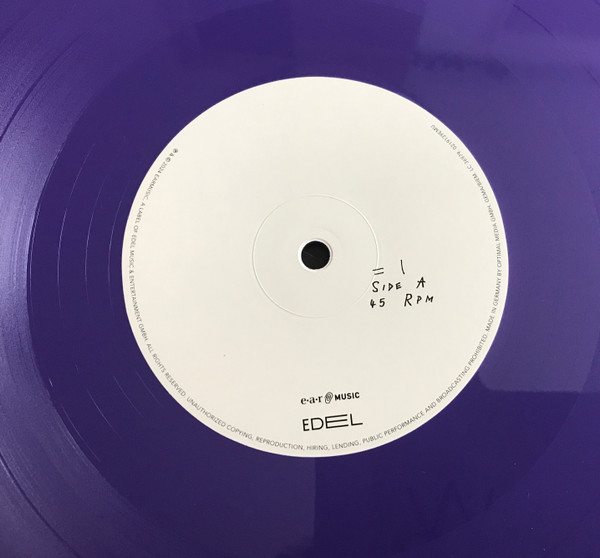
Mettler: Whenever you and Paicey are playing together, you instinctively know when he’s going to do something. I think it happens when he goes to the hi-hat or something, and you know where to fill in. Can you tell me about that kind of instinctual connection you guys have?
Glover: Yeah. When I first met Ian Paice, it was 1969. And at one of our first rehearsal sessions, he came up to me and said, “By the way, I don’t follow. I lead.” And I went, “Ahhh, okay.” (laughs heartily)
Because he’s such a brilliant player, all I can do really is just tuck in with him. Over the years, I’ve learned to see little nuances, and kind of know what’s coming. That just comes with experience.
Mettler: That makes me think of a track like “Pictures of You,” which is on Side B [Track 3], and there are some interesting sequences in it that come up toward the end where I’m like, “These are guys, some of whom have played together for a half-century, now playing with another guy coming in and adding his vibe to it — but it all sounds like it’s gelled together.” All five of you know how to do your thing in tandem.
Glover: Yeah, the thing I learned about Purple over the years is the musicianship. It’s got to be great, because you change on a dime: “How about doing this instead of that?” And you play it immediately — you don’t “learn” it. That just comes from playing with great musicians. I’m probably the least musical on my bass, and they’ve all got their own technical things. They’re actually wonderful techniques — but maybe that’s a good thing for me to actually keep it in order.
Mettler: I think that comes from your pub-rock background, frankly. Is there one “most Paicey” song, in your mind — the one that is the definitive track for him?
Glover: Oh my gosh, gosh, gosh. (slight pause) Well, actually, yeah — “Highway Star” [Side 1, Track 1 on March 1972’s Machine Head, on Purple Records]. When I did the Machine Head remix 25[-plus] years ago [on Warner Archives/Rhino], it was the first time I’d actually listened to the individual instruments — and it was a revelation, for many reasons. One of the things was, the machine gun attack of that song really comes from Richie [Blackmore, DP’s original lead guitarist] and not from Paicey. Paicey’s actually swinging it. There’s always been a little swing to it, always that kind of feel to it — and then you put them together.
To me, rock & roll is a mix of straight and swing. Just listen to Chuck Berry, anyone like that. There’s a tension there. It’s not perfect — and that’s exactly the point.
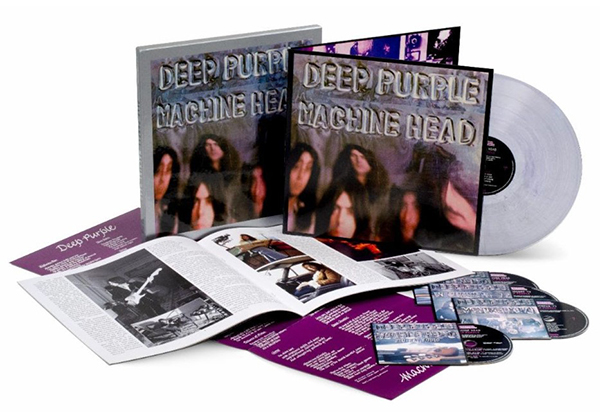
Mettler: That’s very well said, and that should also be the name of your book whenever it comes out. (both laugh) And speaking of Machine Head, I personally love the 50th anniversary remix that Dweezil Zappa did for the recent box set [released as a 3CD/1LP/1BD box set via Warner Records on March 29, 2024, and reviewed here on AP], which is very different sounding from your mix from 27 years ago, as well as the original 1972 mix. As somebody who at least got to approve it or listen to it, how do you feel those box set mixes turned out, from your point of view?
Glover: I think it’s a great package. I wasn’t sure about the mixes at first. The first mixes I heard seemed a bit odd to me. We had so many different mixes going for Atmos and for headphones and bing bang, and I just got very confused about the whole thing.
I didn’t actually get to speak to Dweezil about this. We met him several years ago, as he played with us [at the Montreaux Jazz Festival in Switzerland on July 16, 2016], and I can see why Warner Bros. and Universal wanted to put him together with this project. It’s perfect, really, for them as a merchandising thing, and I can see it in how the package turned out. (slight pause) But, yeah, I must say, I prefer my mixes to the new ones. (laughs)
Mettler: I can understand that. I can listen to each version and appreciate each mix for different reasons, like, “Oh, here’s what the band did back in ’72. Here’s what Roger did. Here’s what Dweezil did — and here’s what it sounds like on the new vinyl.”
Glover: Yeah, yeah. I mean, it was a brave thing for Dweezil to do, and I think he did well. I kind of got used to his thinking a little bit, and you’re right — he has brought something new. There are a few subtle touches. He’s added some sound effects here and there — but they’re very subtle, nuanced things, which gives it a bit more of a wave effect.
Mettler: That’s true. And then there’s a nice — well, we won’t give it away to people who haven’t heard it yet, but there’s a, we’ll just call it an Easter egg at the very end of “Smoke on the Water” [Side 2, Track 1] verbally, where Ian [Gillan, DP lead vocalist] namechecks somebody’s father there.
Glover: (laughs) Yes, that’s right, That was on my mix as well. (slight pause) It was a rough week for Frank. He lost everything in the fire.
Mettler: It was a truly devastating event, and it’s all described in a song that I think a lot of people don’t even necessarily know what they’re singing when they’re singing along with it — they just know all the words, and maybe they don’t know the actual story behind them.
Glover: When I was in Rainbow years ago. I was doing a radio interview somewhere — San Diego or something, I think— and the guy said, “Oh, Roger Glover, Rainbow. Weren’t you in a band before Rainbow?” I said, “Uhhh. . . yes.” He went, “Ah, ‘Smoke on the Water’! Is it true you guys set fire to an island?” (laughs heartily)
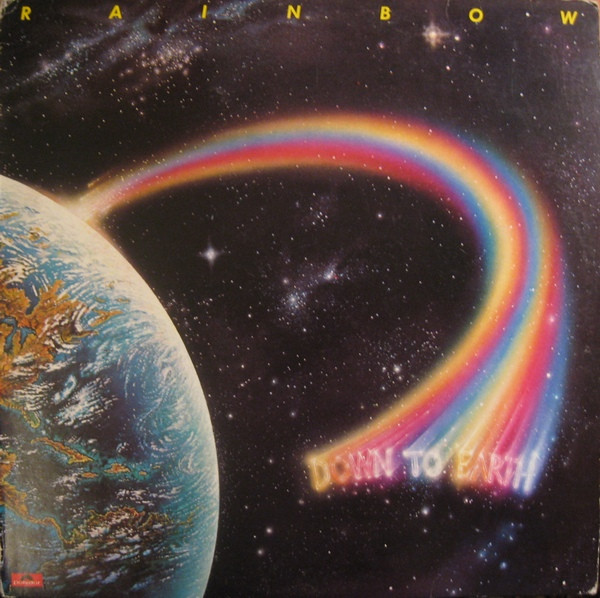
Mettler: The myths that some stories get turned into! (more laughter) Well, I’m glad you mentioned Rainbow, because you produced [August 1979’s] Down to Earth [on Polydor], and then, for Purple, you’ve produced some records like [October 1984’s] Perfect Strangers [also on Polydor], and other things. So, in working with Bob Ezrin as your producer for the past 10-plus years or so now, do you feel you have to step back out of putting on your producer hat, or do you guys have a working rhythm as far as that stuff goes?
Glover: Both of those. I step back, and let him take over. But he does talk to me about things, and he listens to suggestions that, coming from me, have a bit more weight than anyone else in the band — maybe? No, I mean, it’s a great relationship. I’m very happy not to be producing, believe me.
Mettler: it’s hard to produce the band you’re in, right? There’s always some kind of a weird dynamic at work, I would think.
Glover: (nods) Almost impossible. It’s almost impossible — but it’s not totally impossible. But you gotta please everyone. That’s the thing. You haven’t got one solid brain on it, you’ve got one f---ing mind on it! If you’re writing stuff, and you’re playing stuff, and you’re producing, that’s three hats — and I’ve only got one hat, you know?
Mettler: Fair point, and it’s a pretty good hat at that. Now, is there one particular song on the new = 1 album where you felt like you and Bob had worked out something together that maybe wasn’t working at first, or you guys had to just discuss it and have him say, “I need you to do this thing here”?
Glover: Well, he does that sort of thing naturally anyway. He could be making suggestions on arrangements as well. I can’t think of any one particular thing. We were pretty much driven. We had a couple of jam sessions before we went in the studio. We tried out a few things, so we were roughly in the same direction when we got into the studio. But, yeah, he helped a lot, especially with “Bleeding Obvious [Side D, Track 2].” That was a construction.
Mettler: Yeah, and there are a lot of different arrangement elements going on there. And I’m glad that “Bleeding Obvious” finishes the record, in terms of how the sequencing goes. You mentioned Chuck Berry a moment ago. When you were growing up, wasn’t a Chuck Berry record and a Lonnie Donegan record among the very first records you bought as a kid?
Glover: Yeah. Yeah, yeah, yeah. Lonnie Donegan came first. Skiffle was a big craze, and it was like anyone could play skiffle. You could pick up a tin can, and you’re part of the band, you know?
It was very basic. and the songs really all were coming from America — “Tom Dooley” [the No. 1 1958 version by folk legends The Kingston Trio, on Capitol], and stuff like that. Leadbelly songs that just sent everyone a-light — and everyone wanted to be in a skiffle band. And right on the heels of that, along came rock & roll. It was like a tsunami of music, and for me, at [ages] 11, 12, 13 — perfect.
Mettler: Was there a favorite shop that you went to growing up? One particular record shop you always went to?
Glover: When I was that age, I couldn’t afford records. I had four records — and that was all I had, but one of them was Lonnie Donegan, “Cumberland Gap” [a 1957 10-inch 78 on Pye Nixa]. That was my first Lonnie Donegan one.
But, later on, growing up, yes, I did have a record shop fairly near where I lived. And I went along to it a lot. Especially when I was in Purple, I’d come back from a tour, and I’d let myself go to the record store and buy, I don’t know, six dozen albums, just because I was putting money in my pocket and went, “Oh, I’ve got to try that! I’ve got to try that!” It was a magic time, really.
Mettler: It really was — and still is. And I continue to enjoy going to record shops whenever I can, wherever I can. A lot of us did that while we were growing up, and it’s nice we can keep doing it today. Do you still have a lot of those records you bought back in the day? Glover; Yeah. I still have my ’70s collection — probably somewhere between 2 and 3,000 records — and they’re in a lovely case with a nice record player on top. The record player costs about 500 bucks. Well, 500 Swiss francs, since I’m in Switzerland, so. . . yeah. (smiles) But I have to take the elastic band off to change the rpm. And it’s more like a ritual, isn’t it? We all have our rituals — a cup of tea in the morning, and changing the records in the evening. (both laugh)

Mettler: None of us are perfect strangers to any of that, to borrow an album title of yours. And it’s, what, 40 years old now, since it was released in [October] 1984 [on Polydor], so I think we need another box set from you guys. Is Purple gonna continue with historical box sets like the Machine Head one?
Glover: I’d love to see a remix of Perfect Strangers, and a remix of The House of Blue Light [released in January 1987, also on Polydor]. I would love to see that. There are a few technical problems, though. We can’t find the tapes for Perfect Strangers. We can’t find anything for that.
Mettler: Oh, man, that’s a bummer.
Glover: (shakes head) Yeah, I know. I know. We do have about 40 multitrack reels for The House of Blue Light, which we did on 48 tracks, believe it or not — but to go through all that and find the one that we used would take a lot of time and money.
Mettler: Well, if you ever were to get lucky and actually find the tapes for Perfect Strangers, do you have some favorite tracks on it you’d love to remix first?
Glover: One of my favorite songs from Perfect Strangers was “Wasted Sunsets.” Yeah. I like that one, and I’d love to have a go with it again. “Knocking at Your Back Door” is a good song, but not my favorite song. And I like the song “Perfect Strangers.” It’s a very unusual song.
Glover: The whole Perfect Strangers thing was recorded in ’84, and that’s when sampling came into things. We were getting pushed, technologically, in the wrong direction — and that’s why we returned, really, to our roots. We record together live in the studio. We don’t layer things on.
Mettler: A hallmark of the Deep Purple sound, I’d say. Well, I have one last thing for you before we go. What I’d like to do is throw us 50 years into the future. So, it’s gonna be 2074, and you and I are physically probably not around then, unless science keeps us there. (both laugh) But however people listen to music in that year, and they type in “Roger Glover” or “Rainbow” or “Deep Purple” into their listening device, what kind of experience do you want that future listener to get from your music?
Glover: Wow. I don’t know. I mean, it’s going to be so old-fashioned by then. God knows what music will be. Well, yeah, it’s going to be out of time, of course — but in a way, it’s timeless. Like classical music and orchestral music, it’s timeless. You hear Mozart and you still get a thrill out of it, and I think rock music has its place in that. Not so much pop. Pop music’s a different matter. But serious rock musicians, good musicians, good records, and good songs — I think that will last.

DEEP PURPLE
= 1
180g 45rpm 2LP (earMUSIC/Edel)
Side A
1. Show Me
2. A Bit On The Side
3. Sharp Shooter
4. Portable Door
Side B
1. Old-Fangled Thing
2. If I Were You
3. Pictures Of You
4. I’m Saying Nothin’
Side C
1. Lazy Sod
2. Now You’re Talkin’
3. No Money To Burn
Side D
1. I’ll Catch You
2. Bleeding Obvious

- Log in or register to post comments


I lost track of them after ‘Stormbringer.’
Thanks for the nudge!

This release captures both their history and their continued miside relevance in the music world.
















